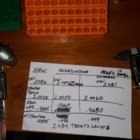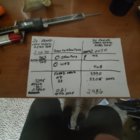Since I've stopped neck sizing and committed to only full length sizing I've noticed excessive brass flow on my 30-06 brass, .008-.010.
Wilson FL bushing die.
All brass was trimmed to length then body and necks were sized with rcbs FL die.
21st century expander mandrel.
Necks turned
Loaded and fired.
After FL sizing with my Wilson .008-.010 growth in necks.
Die was set to hold shoulders in place and not bump, trying to let brass grow to fit new chamber.
Brass I fired yesterday measures .003-.0035 @ shoulder body junction and just above the web larger than sized brass.
I know Wilson will hone the die.
I'm thinking if it didn't size body as much maybe necks wouldn't grow excessively.
What is the minimum amount to size body of brass but still get smooth reliable chambering?
Wilson FL bushing die.
All brass was trimmed to length then body and necks were sized with rcbs FL die.
21st century expander mandrel.
Necks turned
Loaded and fired.
After FL sizing with my Wilson .008-.010 growth in necks.
Die was set to hold shoulders in place and not bump, trying to let brass grow to fit new chamber.
Brass I fired yesterday measures .003-.0035 @ shoulder body junction and just above the web larger than sized brass.
I know Wilson will hone the die.
I'm thinking if it didn't size body as much maybe necks wouldn't grow excessively.
What is the minimum amount to size body of brass but still get smooth reliable chambering?



















